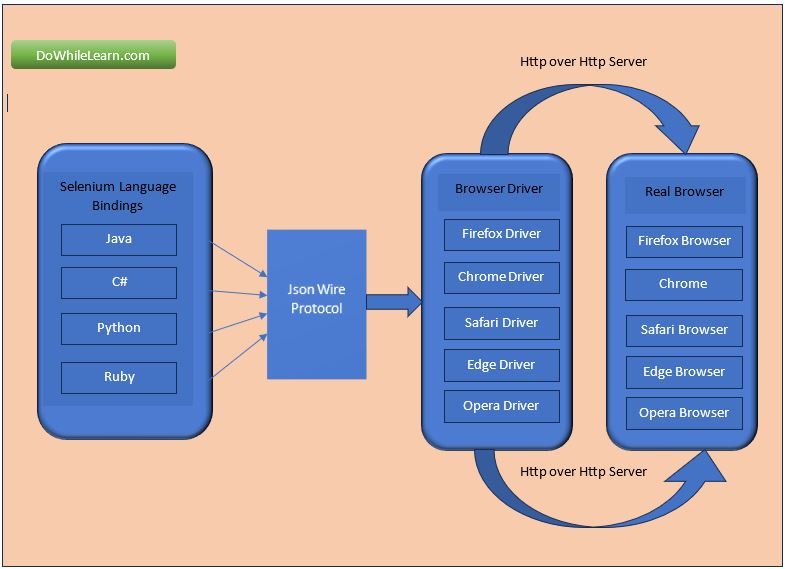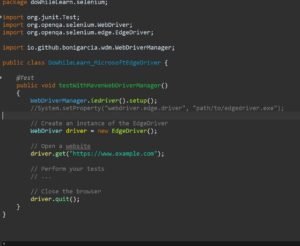Selenium RC vs Webdriver
Before going through Selenium RC vs Webdriver , let’s understand what is Selenium. When it comes to automated testing in the world of software development, Selenium is a popular choice. It provides a range of tools and libraries that aid in testing web applications across different browsers and platforms. Among its offerings are Selenium RC (Remote Control) and WebDriver, two frameworks with distinct features and capabilities. In this article, we’ll compare Selenium RC and WebDriver to help you understand their differences and make an informed decision on which tool to use for your testing needs.
Table of Contents
What is Selenium RC?
Selenium RC, also known as Selenium 1, was the first version of Selenium that allowed testers to write automated tests for web applications. It provided a server that acted as a proxy for the browser and enabled interaction with web elements on the page. Selenium RC supported multiple programming languages and offered flexibility in test execution.
However, Selenium RC had some limitations. It relied on JavaScript-based automation, which introduced complexities and cross-browser compatibility issues. It also required the use of a separate server, making the setup and maintenance process more cumbersome.
What is WebDriver?
WebDriver, also known as Selenium 2, is an improved version of Selenium that addressed the limitations of Selenium RC. It introduced a more efficient and stable approach to automate web applications. WebDriver communicates directly with the browser using its native support, eliminating the need for a separate server.
WebDriver provides a more intuitive and user-friendly API, making it easier to write tests. It supports multiple programming languages, including Java, C#, Python, and Ruby, allowing testers to leverage their existing skills. WebDriver offers better stability, faster execution, and improved cross-browser compatibility.
Comparison between Selenium RC and WebDriver (i.e. Selenium RC vs WebDriver)
Architecture
Selenium RC uses a client-server architecture, where the tests are written in a programming language and executed on the Selenium RC server. The server then communicates with the browser and performs the desired actions on web elements. This architecture introduces an extra layer of complexity and potential points of failure.
On the other hand, WebDriver follows a simpler architecture. It interacts directly with the browser through its native support, without the need for a separate server. This streamlined approach results in faster execution and better reliability.

Browser Support
Selenium RC supports a wide range of browsers, including Firefox, Chrome, Internet Explorer, Safari, and Opera. However, achieving cross-browser compatibility can be challenging due to the reliance on JavaScript-based automation.
WebDriver, being the newer version, has better browser support. It leverages the native support provided by browsers, ensuring consistent behavior across different platforms and reducing compatibility issues.
Speed and Performance
Selenium RC suffers from performance limitations due to its client-server architecture. The additional communication between the client and server can introduce delays, impacting the overall speed of test execution.
WebDriver, with its direct interaction with the browser, offers better speed and performance. It bypasses the overhead of a server, resulting in faster test execution and reduced latency.
Language Support
Both Selenium RC and WebDriver support multiple programming languages, allowing testers to choose their preferred language. Selenium RC supports Java, C#, Python, Ruby, Perl, and PHP. WebDriver extends the language support to include JavaScript, Objective-C, and others.
WebDriver’s wider language support gives testers the flexibility to work with the language they are most comfortable with.
Maintenance and Community Support
Selenium RC has been deprecated since the release of WebDriver, which means that it no longer receives active development and maintenance. While there is still community support available, it is recommended to migrate to WebDriver for future-proofing your test automation efforts.
WebDriver, being the current and actively maintained version of Selenium, has a vibrant community and continuous updates. It benefits from ongoing improvements, bug fixes, and new features introduced by the Selenium project.
Popularity and Industry Trends
WebDriver has gained significant popularity and widespread adoption in the testing community. Its streamlined architecture, better performance, and improved browser support have made it the go-to choice for web application testing.
Selenium RC, being an older version, has seen a decline in usage and is gradually being phased out in favor of WebDriver. Industry trends reflect the shift towards WebDriver as the preferred automation testing tool.
Choosing the Right Tool
When choosing between Selenium RC and WebDriver, consider the following factors:
- Legacy Systems: If you have existing tests written in Selenium RC, it may be more practical to continue using it for maintaining backward compatibility.
- Cross-Browser Compatibility: If your testing requirements involve multiple browsers and platforms, WebDriver is a better choice due to its improved browser support.
- Performance: If speed and performance are critical for your testing needs, WebDriver’s direct interaction with the browser offers better efficiency.
- Language Preference: If you have a preference for a specific programming language, ensure that the tool you choose supports it adequately.
Based on these factors, it is recommended to use WebDriver for new test automation projects. It offers better stability, performance, and compatibility with modern web applications.
Conclusion
In conclusion, both Selenium RC and WebDriver have played important roles in the evolution of Selenium as a powerful automation testing tool. However, WebDriver’s improved architecture, better performance, and wider industry adoption make it the preferred choice for automated web application testing. By migrating to WebDriver, testers can benefit from enhanced stability, speed, and cross-browser compatibility.
Interview Questions
Q: Can I migrate my existing Selenium RC tests to WebDriver?
A: Yes, it is possible to migrate Selenium RC tests to WebDriver. However, it may require some modifications in the test scripts due to differences in the APIs and working mechanisms of the two frameworks.
Q: Does WebDriver support mobile application testing?
A: Yes, WebDriver supports mobile application testing through frameworks like Appium. It enables testers to write tests for mobile applications using the same WebDriver API.
Q: Which programming language should I choose for Selenium WebDriver?
A: The choice of programming language depends on your familiarity and the requirements of your project. Java, C#, and Python are popular languages for WebDriver automation.
Q: Is Selenium RC still supported?
A: Selenium RC has been deprecated and is no longer actively supported. It is recommended to use WebDriver for new projects and consider migrating existing Selenium RC tests.
Q: Are there any limitations to using WebDriver?
A: While WebDriver offers numerous advantages, it does have some limitations. For example, it cannot automate desktop applications or handle system-level alerts. However, these limitations can often be addressed through additional tools and frameworks.

